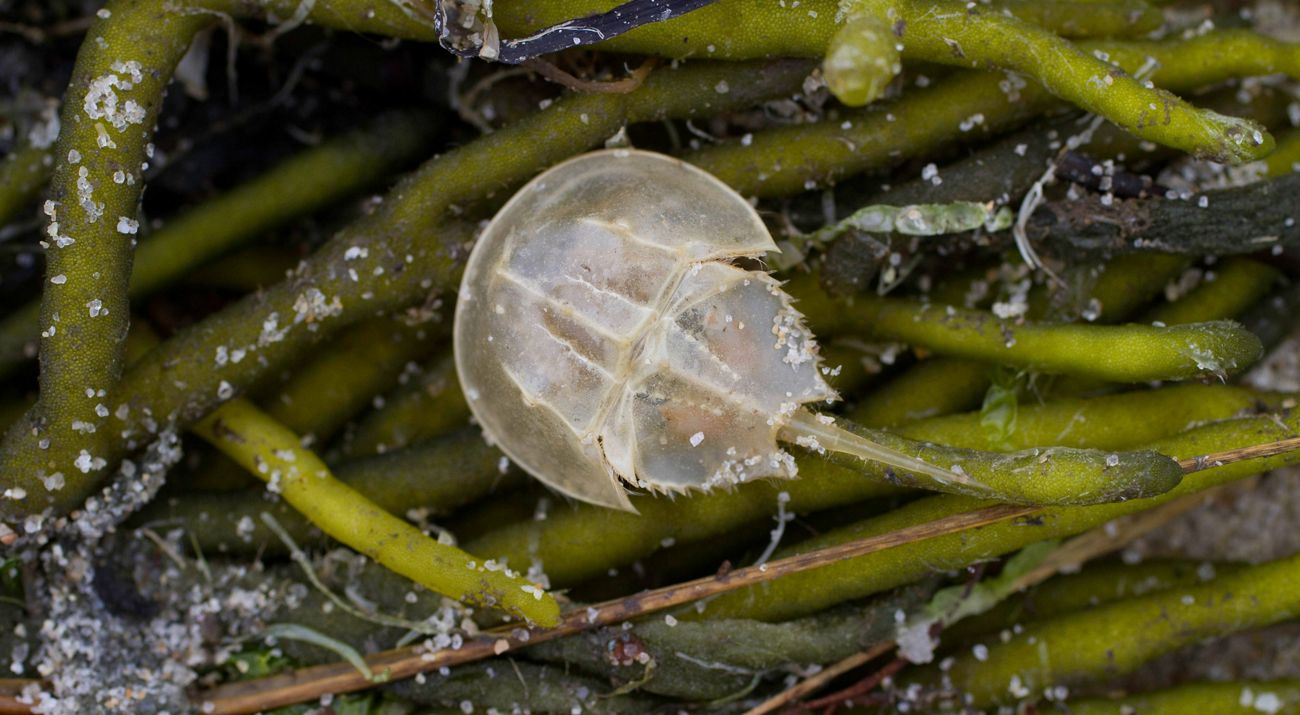
Meet the Horseshoe Crab
Horseshoe crabs are among the world's oldest and most fascinating creatures. Not true crabs, but more akin to spiders or scorpions, they are estimated to be at least 300 million years old. The earliest horseshoe crab species were crawling around the Earth's shallow coastal seas for at least 100 million years before the dinosaurs even arrived.
Since that time thousands of other species have come and gone, but horseshoe crabs have survived and today remain much as they were those millions of years ago, hence the nickname “living fossils.”
These ancient arthropods are vital to the migration of thousands of shorebirds on route to their breeding grounds in the Arctic. Relying on masses of tiny, green eggs spawned by breeding horseshoe crabs, shorebirds like the red knot descend on the Delaware Bayshores famished and at half their departure weight. Before continuing on their epic 10,000 mile journey, these amazing birds must gorge themselves on horseshoe crab eggs sloshing against the shores of the Delaware Bay.
The horseshoe crab also has benefits to human health. Its blood, which is removed with no apparent harm to the crab, contains a clotting agent called Limulus amoebocyte lysate (LAL), which is used to test intravenous drugs, heart valves, and other prosthetics for the presence of bacterial contamination.

Protecting the Horseshoe Crab
Horseshoe crabs are survivors. However, their numbers began to decline in the 1990’s and have not yet recovered.
Used as bait for eel pots and whelk, horseshoe crabs are very valuable, up to 5 dollars for a large female. And they are very easy to harvest – they come to beaches in large groups, move fairly slowly, and don’t bite or pinch. This makes horseshoe crabs very easy for people to collect and sell.
Another threat is the loss of sandy beaches needed to lay eggs. So The Nature Conservancy and others are actively researching horseshoe crabs to find out what areas are most important to conserve in order to protect the species.
One of these research projects is a citizen science count of crabs. Each year throughout May and June people gather at 12 beaches in New Jersey and 13 in Delaware to count spawning crabs because Delaware Bay is home to the largest population of horseshoe crabs in the world. Many organizations participate in the survey, but only two in New Jersey, the Nature Conservancy and the Wetlands Institute regularly train new volunteers from the public.
_Kim_Hachadoorian_tnc_4000x2200.jpg?crop=533%2C0%2C2933%2C2200&wid=400&hei=300&scl=7.333333333333333)